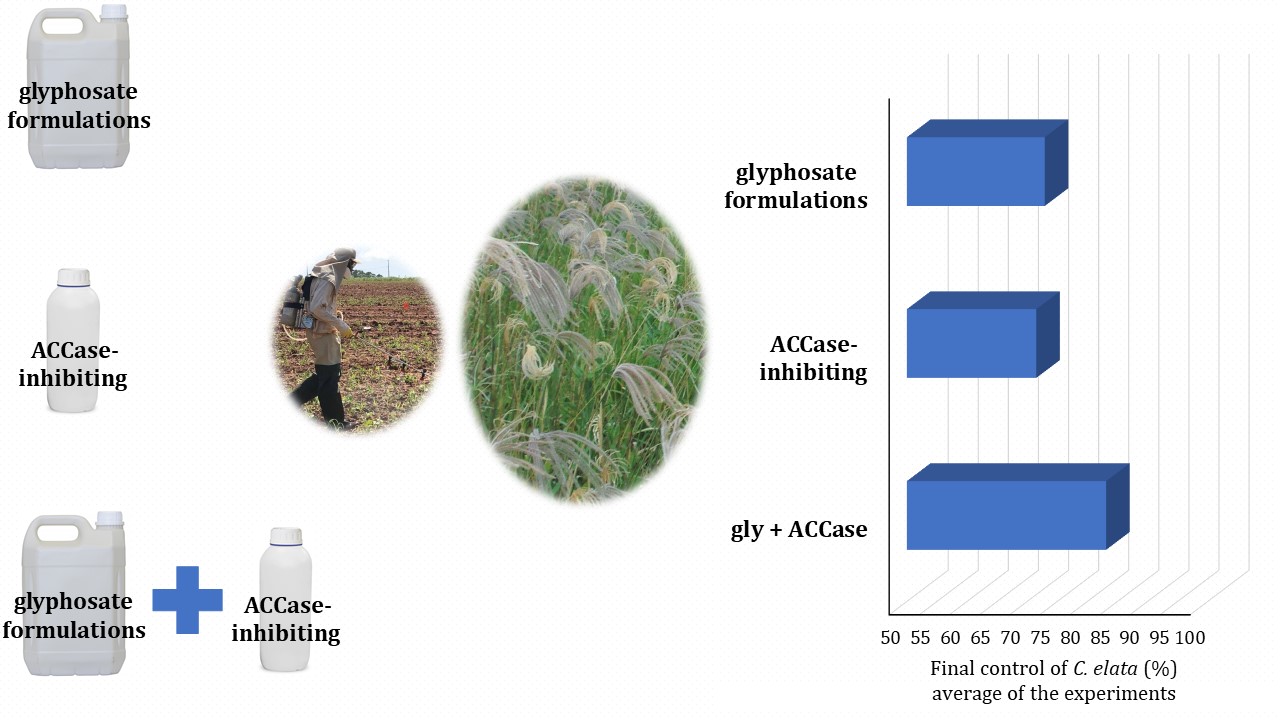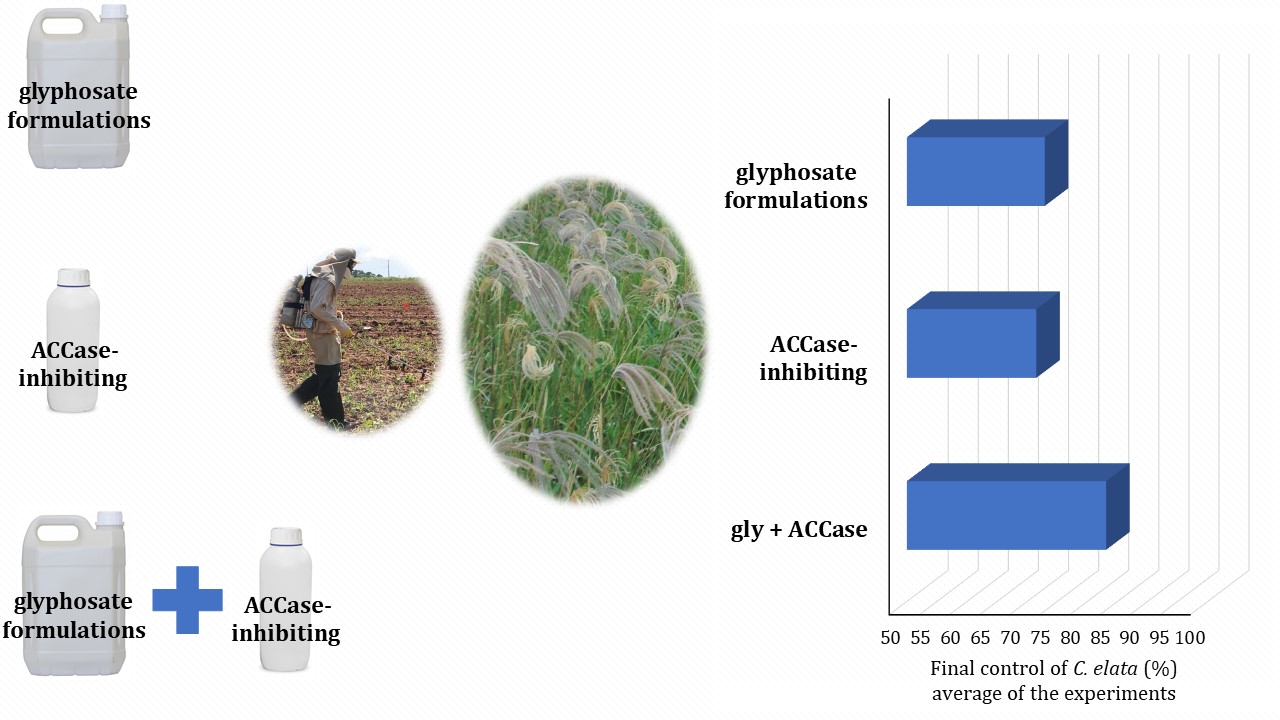Mixtures between glyphosate formulations and ACCase-inhibiting herbicides in the control of Chloris elata
DOI:
https://doi.org/10.48162/rev.39.026Keywords:
chemical control, clethodim, haloxyfop, quizalofop, sethoxydim, tank mixAbstract

Chloris elata is an important weed for grain and sugarcane crops. In addition to its aggressiveness, it may show resistance to glyphosate herbicide. In this context, the aim of this study was to assess the effectiveness of glyphosate formulations, isolated or in association with ACCase inhibitors, in controlling C. elata (putatively resistant to glyphosate) at different developmental stages. Four experiments were conducted in a completely randomized design. Treatments consisted of glyphosate application under different formulations with ACCase inhibitors, isolated or in mixtures. Applications were carried out at the stages of four fully expanded leaves in Experiment I, four tillers in Experiment II, and at regrowth of the four-tiller plants in Experiments III and IV. Applications of glyphosate isopropylamine salt associated with sethoxydim or clethodim showed to be among the best treatments in Experiments I, II, and III, presenting control scores equal to or greater than 90%. However, not even these treatments could provide successful control in Experiment IV. Moreover, and regardless of the formulation, isolated glyphosate, showed 85% (Experiment III) and 50% (Experiment IV) maximum controls. Associations between glyphosate and ACCase-inhibiting herbicides showed to be effective in controlling C. elata, especially at early developmental stages. In general, isolated herbicides provided lower percentages of control, as well as higher values of dry matter. Sole herbicide applications were not effective in controlling C. elata (putatively resistant to glyphosate), regardless of the developmental stage.
Highlights:
- Mixtures between glyphosate and ACCase-inhibiting have been shown to be effective in C. elata control, especially in the early development stages.
- Isolated herbicide applications were not effective in controlling C. elata, regardless of the development stage.
- Mixtures between glyphosate and ACCase-inhibiting is more important in the control than the glyphosate formulation or ACCase-inhibiting used.

Downloads
Published
Issue
Section
License

This work is licensed under a Creative Commons Attribution-NonCommercial-ShareAlike 3.0 Unported License.
Aquellos autores/as que tengan publicaciones con esta revista, aceptan las Políticas Editoriales.


